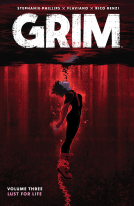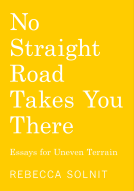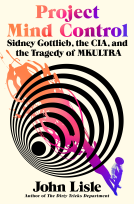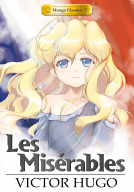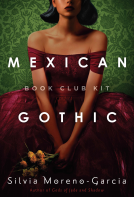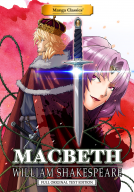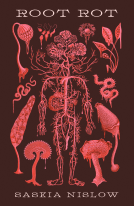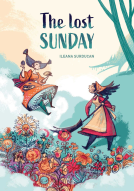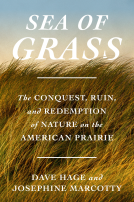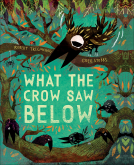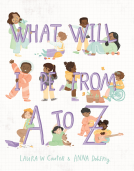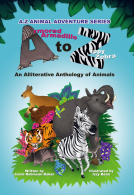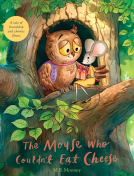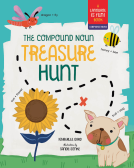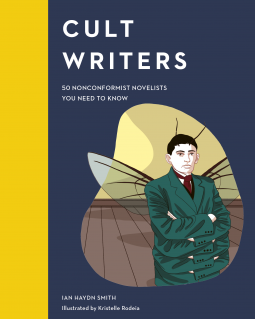
Cult Writers
50 Nonconformist Novelists You Need to Know
by Ian Haydn Smith
This title was previously available on NetGalley and is now archived.
Send NetGalley books directly to your Kindle or Kindle app
1
To read on a Kindle or Kindle app, please add kindle@netgalley.com as an approved email address to receive files in your Amazon account. Click here for step-by-step instructions.
2
Also find your Kindle email address within your Amazon account, and enter it here.
Pub Date Jun 09 2020 | Archive Date May 11 2020
Quarto Publishing Group - White Lion Publishing | Frances Lincoln
Talking about this book? Use #CultWriters #NetGalley. More hashtag tips!
Description
Whether pioneering in their craft, fiercely and undeniably unique or critically divisive, cult writers come in all shapes and guises. Some gain instant fame, others instant notoriety, and more still remain anonymous until a chance change in fashion sees their work propelled into the limelight.
Cult Writers introduces 50 novelists deserving of a cult status. The literary genres and subjects explored within these writers’ pages are rich and diverse – acting as mirrors of their genius minds. FromIrvine Welsh’s gritty Edinburgh streets, to Ken Kesey’s drug-fuelled madness; from feminist trailblazer Sylvia Plath to the magical realism of Angela Carter – discover little knowns with small, devout followings and superstars gracing the covers of magazines. Each writer is special in their individuality and their ability to inspire, antagonise and delight.
Cult Writers is an essential addition to any book lover's library, as well as an entertaining introduction to our weird and wonderful world of literature.
Also in the series: Cult Artists, Cult Filmmakers + Cult Musicians
The writers:
Kathy Acker, James Baldwin, J.G. Ballard, Mikhail Bulgakov, Charles Bukowski, William S. Burroughs, Octavia E. Butler, Italo Calvino, Albert Camus, Angela Carter, Colette, Maryse Conde, Julio Cortazar, Philip K. Dick, Douglas Coupland, Marguerite Duras, Ralph Ellison, Elena Ferrante, Janet Frame, Jean Genet, Joseph Heller, Michel Houellebecq, James Joyce, Franz Kafka, Ken Kesey, Chris Kraus, Milan Kundera, Ursula K. Le Guin, Doris Lessing, Cormac McCarthy, Carson McCullers, Yukio Mishima, Haruki Murakami, Anais Nin, Sylvia Plath, Thomas Pynchon, Raymond Queneau, Ayn Rand, Pauline Reage, Jean Rhys, Juan Rulfo, Francoise Sagan, J.D. Salinger, Arkady and Boris Strugatsky, Donna Tartt, Jim Thompson, J.R.R. Tolkien, Kurt Vonnegut, Virginia Woolf, Irvine Welsh.
Available Editions
| EDITION | Other Format |
| ISBN | 9780711250642 |
| PRICE | $16.99 (USD) |
| PAGES | 144 |
Featured Reviews
 Alison K, Librarian
Alison K, Librarian
Another great little guide, this time to authors rather than music artists, which helps expose the reader to writers they may not be familiar with, and find out more about those they already know about.
There's lots of interesting detail and the illustrations break it up nicely. A list of key works is also useful to add extra information.
Like any of these types of books, some people will probably highlight artists who have, arguably, been left out but I think there is a good spread in terms of genres, eras, nationalities, genders and ages.
A good addition to any library literature collection.
Thanks to the publisher and Netgalley for this ARC
I was quite mesmerized by the title of this book: The Cult Writers. “Cult” is a term I was ignorant to in the context of literature.
What does it mean to be a cult writer?
As far as I understand, the work of the writer includes:
-Romantic elements and hope
-Disappointment, melancholy and depression of any kind.
-The prospect of a better world, a utopia or dystopia
-A means of distraction
-The reader must either love it or hate it, there is no middle ground here.
Well, I have never defined myself as a cult reader but I think I will from now on. I proudly state that I love reading the works of the authors listed as cult writers. I am not sure if it’s a matter to be proud of but I will acknowledge it as such. I loved every single page of this book. It’s a bookworm’s heaven. I have learned so much about the authors that I have already been familiar with and got acquainted with some that I have never heard of. A win for me in every way except that my To-Be-Read list, already laden with hundreds of books, has grown significantly after reading this. So, read with caution or you’ll end up with frustration over many books that must be read.
 Kerry P, Reviewer
Kerry P, Reviewer
I have a preference for cult writers, so I was already familiar many of the authors included in this book such as William Burroughs, Jim Thompson and Philip K. Dick. I look forward to reading some of the authors I was not as aware of. I fact, I would like to read the entire series including artists, filmmakers and musicians.
 Reviewer 541306
Reviewer 541306
Thank you to Netgalley and Publisher for a ARC of this book.
I thought this book would be ideal for me and that it might generate interest in authors that were previously unknown to me. Which it did. I also really liked that some of my favourite authors were featured in this book. Of course there were others I would have included and others I would not have but overall it was interesting and informative, offering insight into both the Authors lives and works.
Wildly Idiosyncratic, But Fun
This isn't very deep, and at 50 writers it isn't very broad, but the selection is just quirky enough to make the book interesting and fun. You could quibble with who is and isn't included; that sort of gripe is unavoidable. The author assays an explanation of the choices in his Introduction, but doesn't try too hard because the whole idea of "cult writer" is just too slippery for a quick overview. I was happy with the catch all definition of cult writers as genre benders and flagrant form experimenters who addressed transgressive topics, and, as bonus, often lived colorful private lives.
Each writer gets a two page spread that offers a brief bio and a survey of most widely recognized works. There is a thought or two about what makes the writer special or unique, and some comments about where the writer fits in the canon.
Putting aside quibbles, there are three main categories of writers here. Some are in the obvious group - Wolf, Camus, Vonnegut, Burroughs, Rand, Pynchon. Some are in the middling group, (maybe familiar, maybe not). For me that included writers like Bulgakov, Rhys, Coupland, Sagan, Butler. Then you get the ones that are really niche cult figures - Angela Carter, Djuna Barnes, Pauline Reage, Arkady Strugatsky. These were the most fun because that sent me off to find samples of their work, and helped to introduce me to new potential cults I could join. On top of that it was fun to see shout outs to some of my personal favorites, like Eve Babitz and Italo Colvino.
So, good fun. It's an interesting annotated list, and certainly upbeat and cheerful. An engaging diversion.
(Please note that I received a free advance will-self-destruct-in-x-days Adobe Digital copy of this book without a review requirement, or any influence regarding review content should I choose to post a review. Apart from that I have no connection at all to either the author or the publisher of this book.)
 Christina P, Reviewer
Christina P, Reviewer
A who's who of cult writers! Each author had facts, resources to search out as well as little fun antedotes.
A definite must have for those of us that love underground authors and want to know about others in that genre.
 Abby S, Reviewer
Abby S, Reviewer
A wonderful introduction to a group of cult writers.I found this a really interesting entertaining informative read.Recommend to all who are interested in these authors.#netgalley#quartobooks
A wonderful and thought-provoking introduction to some of the world's best cult writers! I loved the short biographies and summaries of the themes each writer tackled in their works. The illustrations also captured something of the writers' personalities and definitely added to the text. I really appreciated the list of key works at the end of the book. Thank you for letting me read Cult Writers - I've got a lot of books to go and read now!
In the introduction of this collection (after exploring the criteria for what makes a 'cult' writer), Ian Haydn Smith states that "cult fiction is not the preserve of male, white or English-language writers" - a sentiment I couldn't agree with more. I really like that this book covers so many different genres and a broad range of writers from different countries.
There were many writers I'd heard of but not necessarily known why they were cult writers - this book provided a great insight into the lives of these people, accompanied by quotes and lovely illustrations. This has definitely added some new works to my ever-growing to-be-read list. (And although this list of 50 was limited to the last century, and acknowledged from the beginning that there would obviously be some cult writers missing, I was secretly delighted to see my favourite author Angela Carter was included). A great read for any bookworm.
Cult Writers: 50 Nonconformist Novelists You Need to Know continues with the short format biographical form and continues it well.
Here we read about fifty novelists who've built up a cult following and since they are cult writers you have heard of them, but the short snippets of information give a great pocket biography of the authors that though succinct is informative.
I'm really enjoying this format of group biography as it's the perfect bedside book, dipping into a couple of chapters a night before falling asleep is great and has no pressure, though it can be misleading and you can get pulled into reading a lot as they are so fascinating.
Great artwork from Kristelle Rodeia complements the text so well.
Another great book from Ian Haydn Smith which has really added to my TBR.
4.5 out of 5 🌟Ultimate TBR guide I need on my shelf
'Cult Writers' book shows portraits of fifty novelists from the last century who are the most memorable personas and were either a symbol or an anti-symbol of their time and culture. Worth to mention that the book presents authors from every part of the world (which is rare in our English-oriented society). Each description includes an informative biography with mentions about the most famous works and what was the inspiration for them.
I really enjoyed this collection, I found a lot of information about the writers I already know and respect, as well as new authors to put on my to-be-read list. Illustrations created by Kristelle Rodeia was captivating and perfectly captured each of the portraited novelists with all their quirks and habits.
This title is a must-have for every bibliophile.
*Thank you Netgalley and the publisher for the ARC in exchange for an honest review. Opinions and feelings are my own.*
 John L, Reviewer
John L, Reviewer
The one flaw books alleging to provide a list of the definitive '50 cult authors' (or whatever) have is that they're an inherently personal list, and we learn more about the archivist's taste than any of her or his subjects. This book doesn't have that flaw. These definitely are pocket biographies – some over one page, the rare few over a full double-page spread, so we don't learn quite as much as we might – but they give a pointer, a primer, a tease towards what their subjects' legacy might provide us. And their uniform brevity, in that they have to cover all of the authors' background, style and output, as well as pertinent life events and cultural connections, means that even the less convincing entries (it might not be your fault, Eve Babitz) don't diminish what our author has achieved. I generally find books like these too subjective and easy to argue with, but this volume gets it a lot more right than wrong. A strong success, and a strong four stars.
 Athina S, Reviewer
Athina S, Reviewer
I have said it before and I will say it again. I really like books about books, authors and the art of literature in general. So, Cult Writers 50 Nonconformist Novelists You Need to Know by Ian Haydn Smith was a no-brainer for me.
I liked the way it was written and the selection of writers it included. Through this book I learned about authors I wasn't familiar with but I also learned more things about favorite authors.
I should also mention that the illustrations done by Kristelle Rodeia were very good and perfect for the book.
If you are a book lover, I believe that this books should be on your bookshelves.
 Beth B, Reviewer
Beth B, Reviewer
Fun, quick read about 50 "cult" authors and what makes them and their writing so special. There were some old favorites on here, plus some I've not read before (but plan to now). The book recommendations at the end of this book were helpful.
 Media/Journalist 615865
Media/Journalist 615865
In the introduction to his slim yet thorough volume, Curzon Magazine editor Ian Hadyn Smith takes on the task of defining cult writers, and more specifically, to quote the title, "nonconformist novelists you need to know." In discussing his rationale, Smith explains his choice of authors while also critiquing the very practice of culling a selection of "the best" of anything. He notes that the definition of a cult writer is transient, always a product of its time.
The chosen time for Smith, then, is authors who published in the 20th or 21st century. Although the established category is nonconformist novelists, Smith also determines that fiction writers might include novelists who are best known for their nonfiction, journalism, or hybrid works. Examples include Joan Didion, better known for her nonfiction, and the poet Sylvia Plath, also known for her influential novel, The Bell Jar. Smith also notes that the category of "cult writers" is not the exclusive domain of male, white, or English-speaking authors who comprise the traditional canonical literature. From this perspective, then, even an avid reader is likely to come across an author whose work is unfamiliar.
Each of the 50 biographies is succinct and compelling. For those who have read the featured authors, the tightly-rendered profiles offer biographical details that can enhance the reader's understanding of authors they appreciate. Italo Calvino, for example, despised the far-right politics in Italy and joined a Communist group toward the end of World War II. Cormac McCarthy, beloved for his writing about the American West, is originally from Rhode Island and attended the University of Tennessee. He demonstrates that sometimes the outsider who embraces a new place can best capture the essence of local culture.
The diversity of the cult writers here signals both Smith's far reach as a reader and his role as an accomplished researcher. Counted among the cult writers are those with a vast international reputation, like J.R.R. Tolkein or James Joyce, as well as authors whose work may not be as widely known to contemporary audiences, such as Françoise Sagan. After being expelled from two schools for bad behavior, Sagan enrolled at the Sorbonne but left without graduating.
Her first novel, Bonjour Tristesse, was published in 1954, when she was 18 years old. The story of 17-year-old Cecile vacationing with her adulterous father and experiencing her first romance quickly became an international sensation, as did the young author. Smith notes that Sagan continued writing, publishing more than 20 novels along with plays, short story collections and essay collections, despite her growing addictions to various drugs. She died in 2004, at the age of 69. For each of the writers, Smith finds a narrative or details that leave a lasting impression on the reader.
The book's design is delightful, with illustrations and author portraits by Kristelle Rodelia. She has also illustrated the other books in Quarto's Cult series, including filmmakers, artists, and musicians. For Cult Writers, each author profile fits on a double page spread with a readable, attractive typeface, Rodelia's excellent illustrations, and a tag for the author. Charles Bukowski is "The Dauphan of the Dispossessed". The often-underrated Douglas Coupland is "The Digital Age Sauvant". Elena Ferrante is "The Anonymous Author", as her anonymity is central to the public's shaping of her identity and has an intriguing influence on how critics and readers perceive her work. William Burroughs is "El Hombre Invisible", along with Ralph Ellison, "The Visible Writer".
There are some exceptions to the two-page spread, like Burroughs, whose portrait follows his profile. Camus' profile, accompanied by the quote, "A novel is never anything but a philosophy put into images," includes a striking illustration of the author in suit and overcoat, with a cigarette between his lips. In contrast, Joan Didion's portrait does not seem to capture her essence, as Camus's does. That Didion has been continually photographed for decades as her image changes likely contributes to this feeling.
While there is no prescribed checklist for the makings of a cult writer, certain themes come up repeatedly: early play with language and writing along with early experiences of parents' deaths, expulsion from school, difficult marriages and romances. More cult authors in this collection choose solitude over suicide, although both choices might evince the stereotypical "tortured soul" of great writers.
For the reader who wants to dig deeper into quality writing, or the bibliophile looking to branch out into new genres, Cult Writers is an inviting source to decide what to read next. A list of key works by each author facilitates the selection process, especially for the more prolific writers in the collection. Along with the opportunity to consider where to go for new reading material, this collection of short profiles may also remind readers of the cult authors they most enjoy reading.
Interesting insight into some cult writers of note. For some I already knew a bit, for others this was a lovely introduction.
<i>I requested this book on Netgalley and am really glad I did!</i>
The book begins with a description of the qualities that the author considers make a writer a cult writer. Then, it provides information about 50 of them. Accompanying each author's brief life history is a colored sketch with a quote from one of their books. Now, this simple review might not entice you to pick up the book immediately. So, I hasten to add that I enjoyed it and learned a lot from it. You can too!
Find out:
Which writer's on-stage kiss set the stage for a riot back in 1907 -- way before Britney and Madonna
Who wrote a book so inspired by Wuthering Heights but set in their own homeland
The name of the author who first questioned the validity of the conviction of the Central Park Five
The identity of the Black Prince of Letters
What the three rules of writing are according to Denis Johnson
Whether all the writings by Kafka survive or not
Yukio Mishima committing seppuku after a failed uprising
A quick, enjoyable, and informative read...this one!
Readers who liked this book also liked:
Silvia Moreno-Garcia
Historical Fiction, Literary Fiction, Sci Fi & Fantasy
